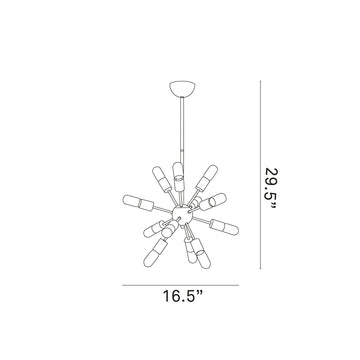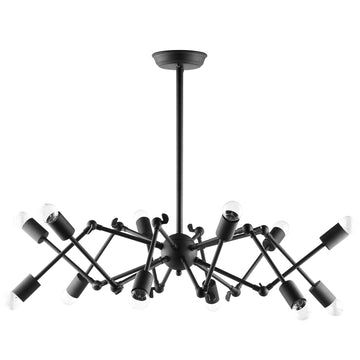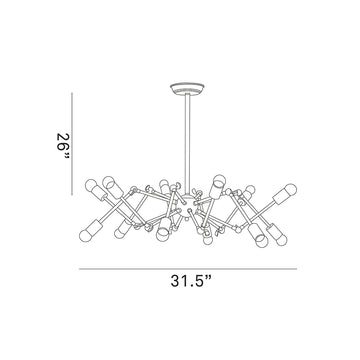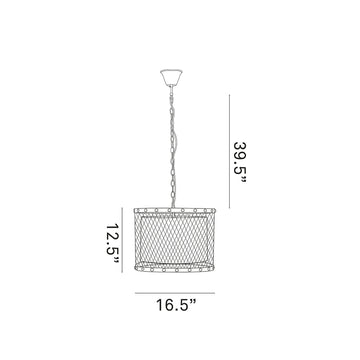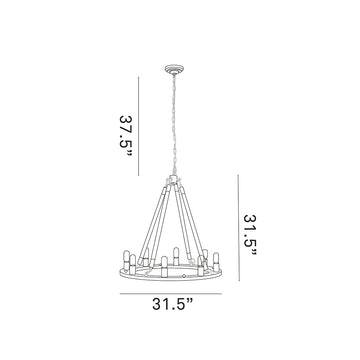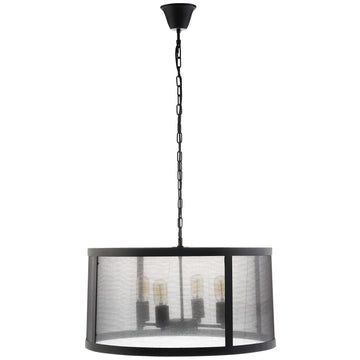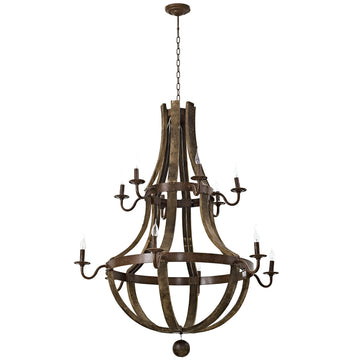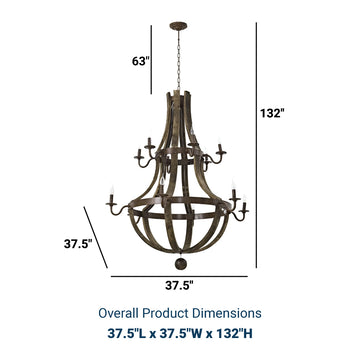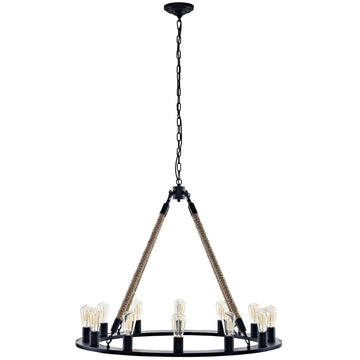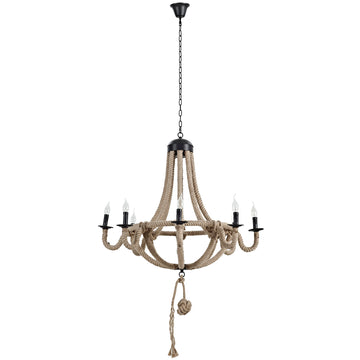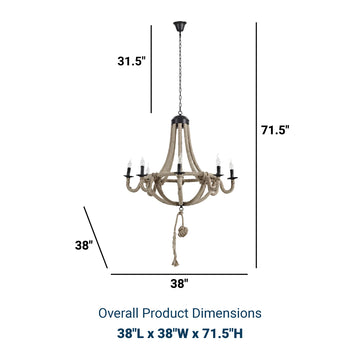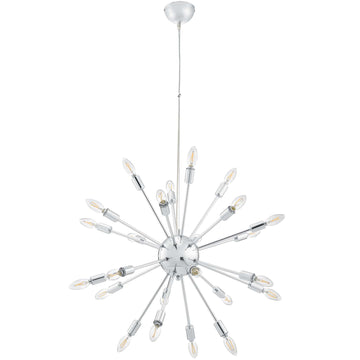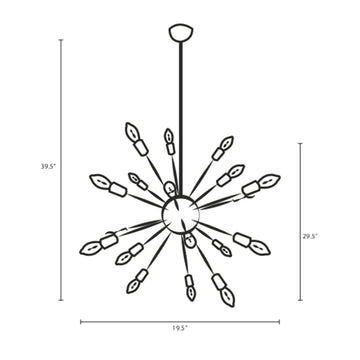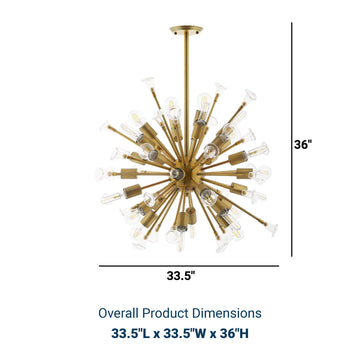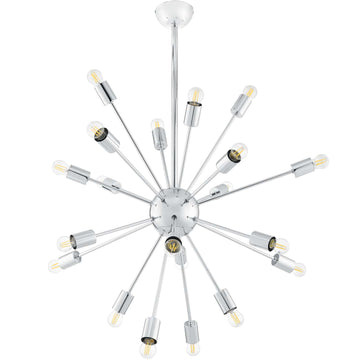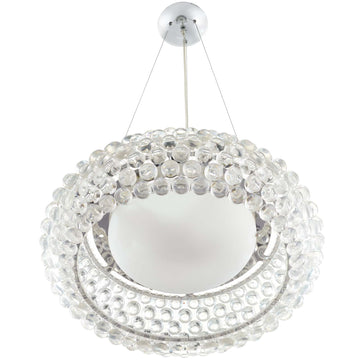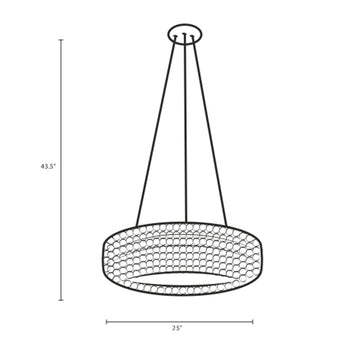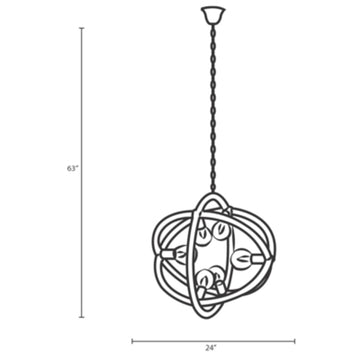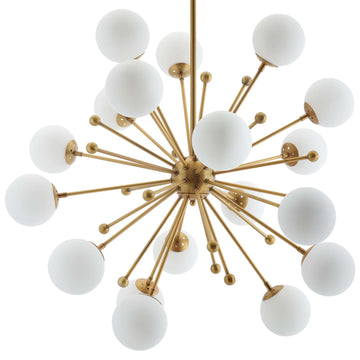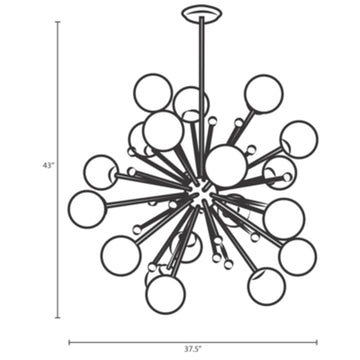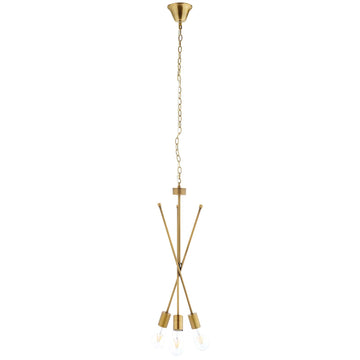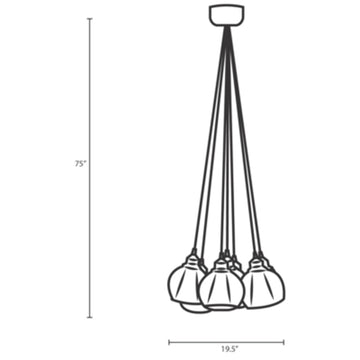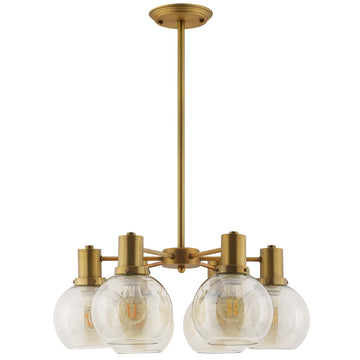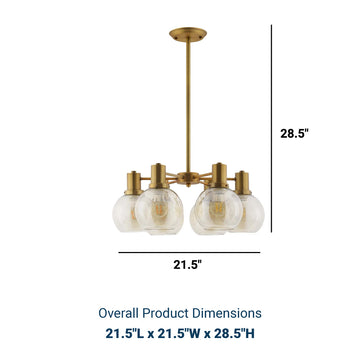

- Featured
- Best selling
- Alphabetically, A-Z
- Alphabetically, Z-A
- Price, low to high
- Price, high to low
- Date, old to new
- Date, new to old
Introduction
Gone are the days when people thought a chandelier was limited to the dining area where family and friends gather to enjoy food. Modern chandeliers are becoming much more popular in home lighting and decoration plans. If you are planning a home renovation or just want a fresh new look for your home, we highly recommend you check out the information listed below.
A Brief History of Chandeliers
The word chandelier is derived from the Latin word candelabrum, which means an ornamental branched holder for more than one candle. Modern chandeliers come in different designs and types of light. They have existed since the medieval era, most popular in palaces and homes of the noble class. It wasn't until the 18th century that artists started using lead crystal in their designs, and chandeliers began to look like what we picture today.
Chandeliers in residential homes have been traditionally limited to the dining area and sometimes the foyer, but as times have changed, so has this perception. Modern designers have left nothing to chance for ensuring a beautiful home with elegant lighting patterns. Whether in a living room or even a bathroom, chandeliers appear to be everywhere.
Are modern chandeliers and pendant lights the same thing?
Although similar, pendant lights and chandeliers are not the same thing. They are both hanging fixtures that provide good lighting, but that's where their similarities end. Pendants are hanging lights with only a single bulb (or a few more) that illuminate a limited area, whereas chandeliers have multiple bulbs that brighten entire rooms. Chandeliers are typically quite bulky when compared to pendants.
Pendants can be placed in just about any room, while chandeliers are limited to rooms large enough to accommodate them. Although similar, they are not related. The closest relative chandeliers are girandoles, ornamental branched candlesticks, or light fixtures of several candles/lights that stand on a flat surface or project from a wall.
Points to Consider When Buying a Chandelier
There are some important details to consider before purchasing a hanging light of this size. A prospective buyer should have a thorough understanding of the following:
Area
A well-lit room creates great appeal and you should consider hanging a chandelier in any of the following areas:
- Bedrooms
- Kitchens
- Dining Rooms
- Bathrooms
- Outdoor Patios
- Entryways
Size
The size of your new hanging light depends almost exclusively on the dimensions of your room. As a thumb rule, you can go with this formula:
Length + Width of the room (in feet) = Diameter of the chandelier (in inches)
For example, a room 20 feet by 20 feet should have a chandelier with a 40-inch diameter.
Large areas of a home, like a living room, can use one large chandelier or more than one medium size. In the case of bedrooms, opting for hangings with 12 lights or more is a good choice and for smaller areas like a bathroom, the one having 6 LED bulbs or 8 bulbs is sufficient.
If you're placing the chandelier over a dining room table, the standard rule is that the fixture's diameter should be one-half to two-thirds the width of the table. For example, if the table is 42 inches wide, the chandelier should be anywhere from 21 inches to 28 inches in diameter. Staying in this range keeps the proportions right.
Height
Regardless of where you place the chandelier, most experts agree on hanging it at least 7 feet from the ground. If you like the way it looks, that's all that matters. Almost every chandelier is accompanied by a ten-foot-long wire and a six-foot chain.
- If the fixture is installed in the dining area, we recommend hanging it 30 to 36 inches above the table's surface. Please note that this rule applies to 8-foot ceilings, and the general rule is to raise the height by three inches for every additional foot of ceiling. For example, if the ceiling is ten feet high, we recommend hanging a chandelier 36 to 42 inches above the dining room table.
Can we use Chandeliers in Wet or Damp Areas?
Moisture is a major concern for lighting and other electrical installations. Outdoor chandeliers are more prone to damage caused by moisture and damp conditions, so ensure the fixtures are rated damp locations. The same goes for bathrooms that are constantly exposed to wet conditions and do not hang chandeliers directly over toilets, bathtubs, sinks, or showers.



































































